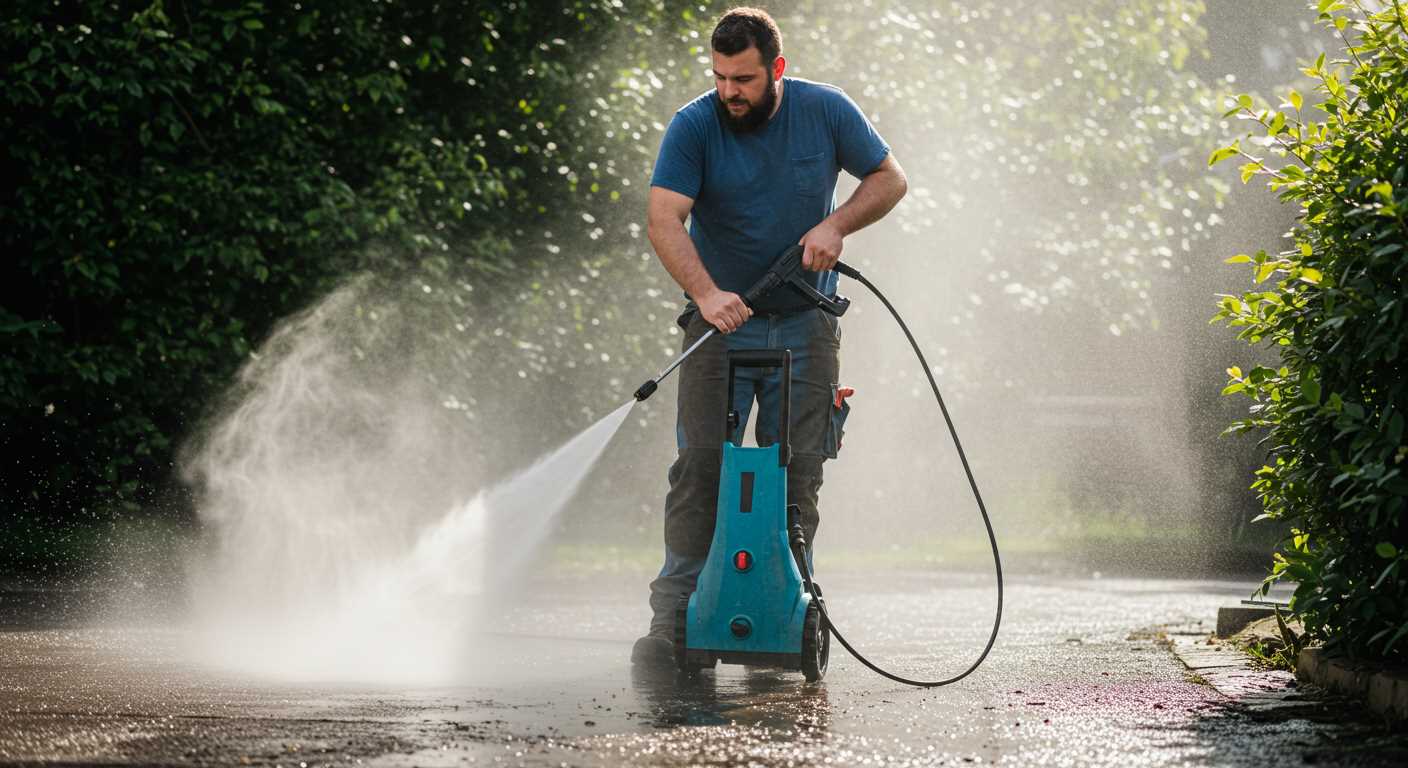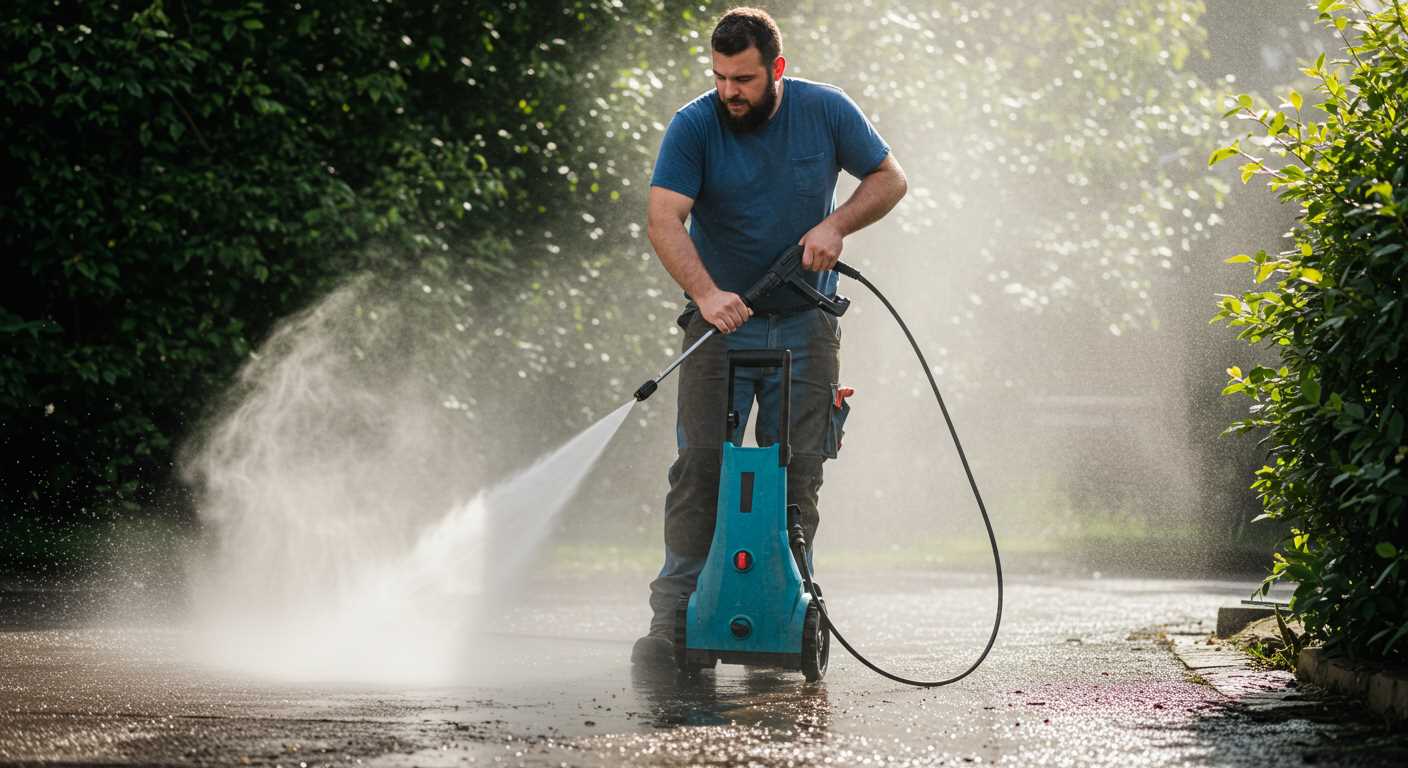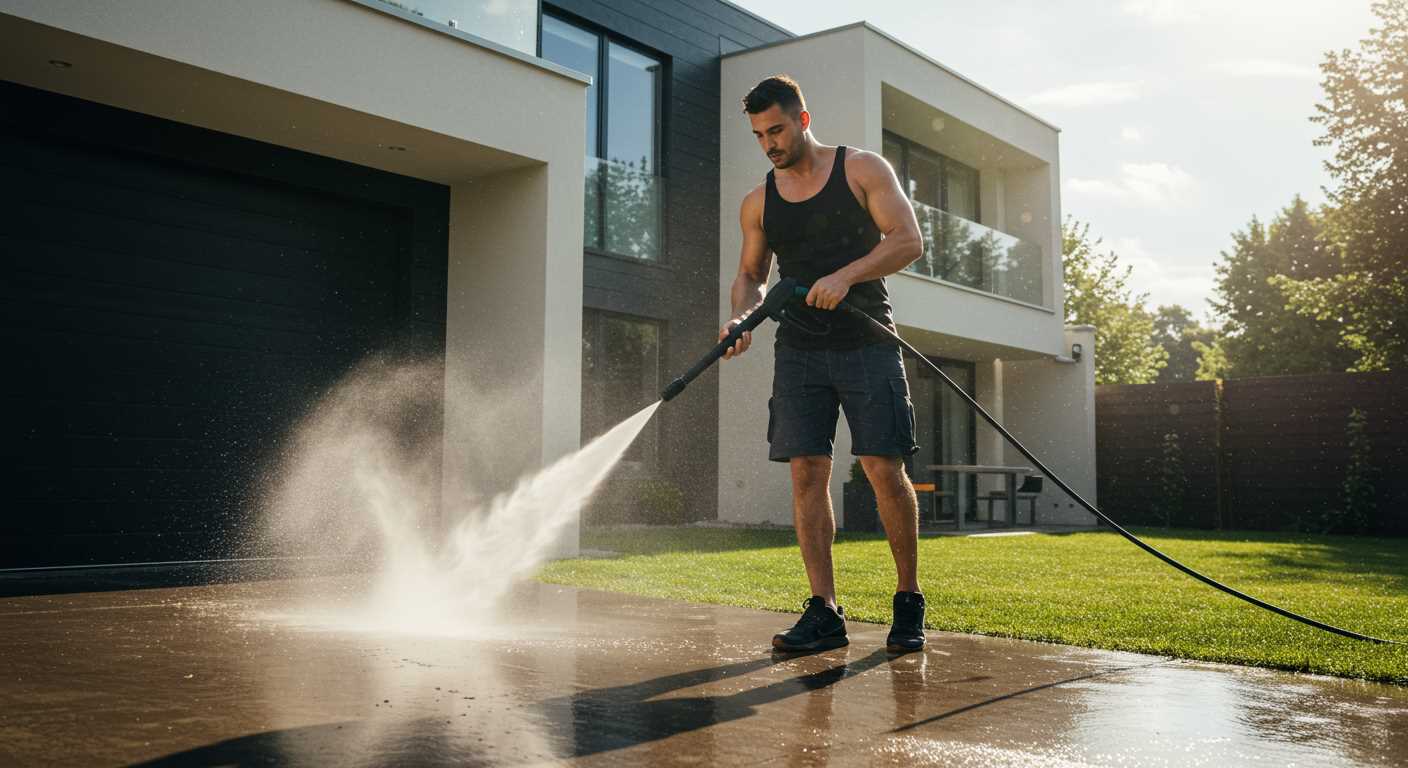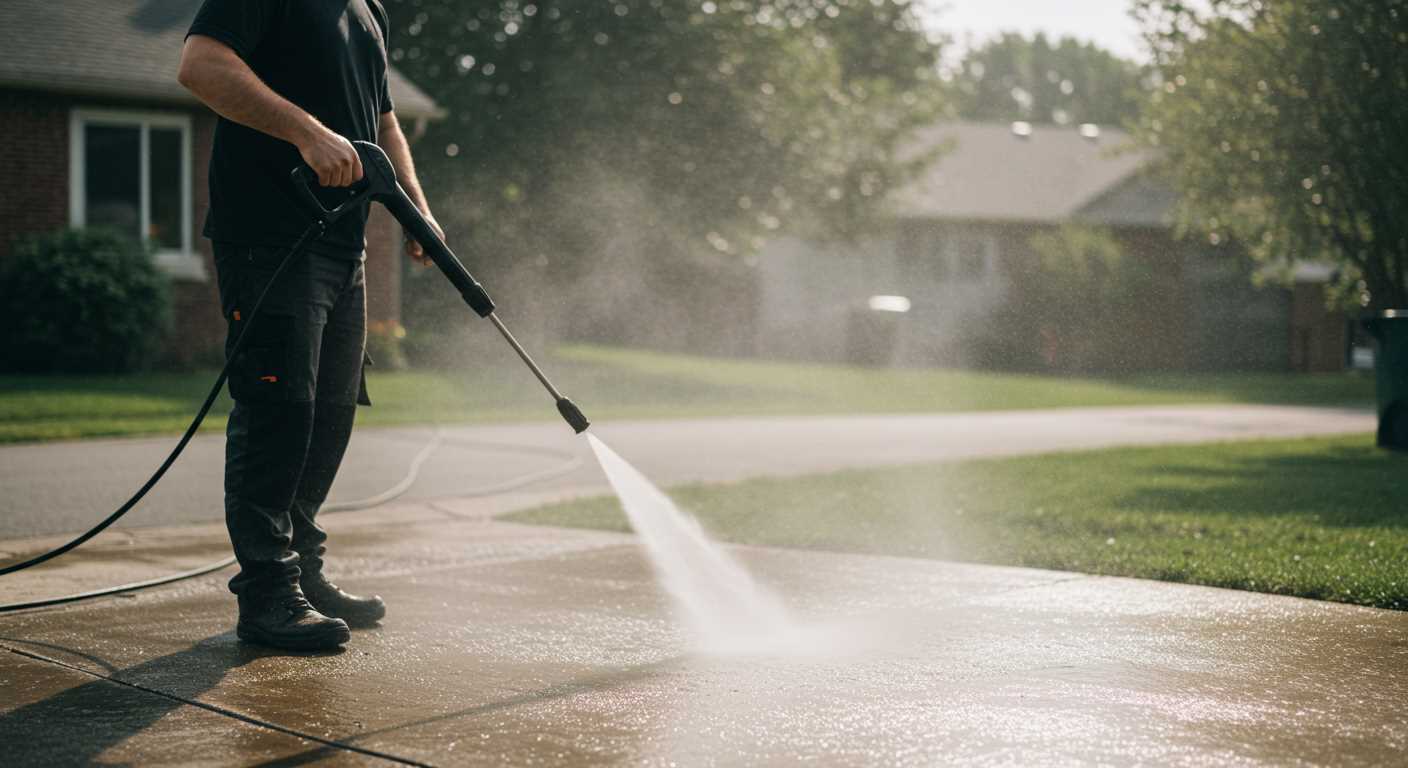




Begin with a simple visual inspection. Look for any visible debris lodged in the nozzle or tip. Often, a quick glance can reveal clogs caused by dirt or residue. A soft brush or a paperclip can work wonders for dislodging minor blockages. Take your time; rushing this step might leave you frustrated later.
If the obstruction persists, immerse the end of the wand in warm soapy water. Let it soak for about 15 minutes to help break down any stubborn grime. After soaking, use a soft cloth to wipe the exterior and a thin tool to clear the interior. This method has served me well numerous times when dealing with stubborn buildups that just won’t budge.
Next, consider using a pin or needle to clear the nozzle. This technique demands a gentle touch; you want to ensure you don’t damage the delicate components inside. I still remember the time a colleague accidentally widened a nozzle, leading to a frustrating loss of pressure. Patience is key here.
Once you’ve tackled the tip, reconnect everything and test the flow. If it’s still lacking, check the hoses for kinks or blockages. A simple twist or repositioning can often restore the full force of your equipment. From my experience, maintaining the hoses in good condition can save you hours of hassle in the long run.
Lastly, regular maintenance is a game changer. After each use, rinse the wand thoroughly to prevent build-up. This small habit can extend the life of your cleaning tool significantly. Trust me, investing a little time in upkeep pays off big time, keeping your equipment ready for action whenever you need it.
Maintenance of Your High-Pressure Nozzle
Begin by removing the nozzle from the wand. This allows for easier access and inspection. Check for any visible debris or buildup that might be obstructing the water flow.
Next, immerse the nozzle in a solution of warm water mixed with vinegar for 15-30 minutes. The acidity of the vinegar helps dissolve mineral deposits effectively. After soaking, use a soft brush or an old toothbrush to scrub away any remaining residue. Pay close attention to the small holes where the water exits.
Rinse the nozzle thoroughly under running water to ensure all cleaning solution and loosened debris are washed away. It’s essential to ensure that each hole is clear; using a pin can help remove stubborn blockages.
Before reattaching, inspect the O-ring or rubber seal for wear. A damaged seal can lead to leaks, diminishing performance. If it appears worn, replace it to maintain optimal functionality.
After reassembly, test the nozzle by running the system briefly. Observe the water pattern to confirm that it’s functioning correctly. If issues persist, consider checking the wand and hose for additional blockages, as they may also affect performance.
Regular maintenance of these components will prolong the life of your cleaning equipment and ensure it operates at peak performance. Keep an eye on the nozzle and perform this routine check after intense use or if you notice any changes in performance.
Identifying Signs of a Blocked Lance
Recognising an obstruction in your cleaning tool is crucial for maintaining its performance. Here are specific indicators that suggest your attachment is not functioning optimally:
- Uneven Stream: If the water flow appears irregular or splatters instead of forming a consistent jet, it’s a strong indication of a restriction.
- Reduced Pressure: A noticeable drop in pressure while operating can signal that the nozzle is compromised.
- Unusual Sounds: Listen for odd noises, such as rattling or whining, which may point to an internal issue.
- Increased Energy Consumption: If your machine is drawing more power than usual, this can suggest that it’s working harder due to a blockage.
- Visible Debris: Inspect the nozzle for any visible dirt, grime, or mineral build-up that could hinder performance.
- Temperature Changes: If the water temperature fluctuates unexpectedly, it might be due to a lack of proper flow.
Observing these signs early can save time and prevent further damage to your equipment. Regular inspection is key to ensuring your device operates at its best.
Disassembling the Karcher Lance Safely
Begin by disconnecting the device from the power source. Safety is paramount. Then, ensure that the water supply is turned off to prevent any accidental discharge while working on the attachment. Use a pair of pliers to carefully loosen the screws or fittings on the nozzle end. This often requires some force, but be cautious not to strip the screws.
Step-by-Step Process
Follow these steps for a smooth disassembly:
| Step | Action |
|---|---|
| 1 | Disconnect from power and water supply. |
| 2 | Use pliers to loosen screws or fittings. |
| 3 | Carefully remove the nozzle and check for debris. |
| 4 | Inspect the inner components for wear or damage. |
| 5 | Reassemble by reversing the steps, ensuring everything is secure. |
Inspection Tips
While disassembling, keep an eye out for any signs of wear. I often find that small cracks or dents can lead to larger issues down the line. If you notice any damage, it’s best to replace the component rather than risk further complications. Reassuringly, most parts are readily available and easy to replace, making maintenance straightforward and manageable.
Cleaning the Nozzle: Techniques and Tools
For a quick fix, use a needle or a pin to gently clear any debris clogging the nozzle. Insert it carefully into the opening, ensuring you don’t damage the internal parts. This method has saved me countless times during on-site repairs.
If the obstruction persists, a soaking solution of vinegar and water can help dissolve mineral deposits. Mix equal parts and let the nozzle soak for about 30 minutes. After soaking, rinse thoroughly with clean water. I’ve found this method particularly useful after prolonged use in hard water areas.
For those stubborn blockages, a dedicated cleaning kit can be invaluable. Many manufacturers offer kits with various brushes and tools specifically designed for these nozzles. I remember one occasion where a combination of a brush and a high-pressure rinse restored functionality to a nozzle that seemed irreparable.
Additionally, consider using an air compressor to blow out any remaining debris. This method can be particularly effective after using liquids to dissolve clogs. Just ensure to wear safety goggles to protect your eyes from any flying particles.
Finally, regular maintenance is key. After each use, take a moment to inspect and clean the nozzle to prevent future issues. A bit of preventive care goes a long way, and it’s a habit I’ve developed that keeps my equipment running smoothly.
Flushing the Lance with Water: Step-by-Step
First, ensure your equipment is powered off and disconnected from the mains. Safety is paramount. After that, find a suitable spot to work, ideally outdoors where there’s good drainage.
Attach a standard garden hose to the inlet of the spraying tool. Make sure the connection is secure to avoid leaks. Turn on the water supply, allowing a steady flow through the hose.
While the water runs, apply a moderate amount of pressure to the nozzle end. This helps in dislodging any debris trapped inside. You might need to alternate between positioning the nozzle up and down to ensure all angles are covered.
After a minute or so of constant flow, disconnect the hose and visually inspect the nozzle. If water flows through easily, you’ve made progress. If not, repeat the flushing process for a few more minutes.
Once you’re satisfied with the water flow, it’s time to check for any remaining blockages. Using a soft brush or a pipe cleaner, gently work on the nozzle tip to remove any stubborn residues. This step can significantly improve performance.
After you’ve finished, reconnect everything and perform a test run. Turn on the device briefly to see if the spray is consistent and powerful. If all goes well, you’ve successfully cleared the path for optimal functionality.
Always remember to maintain regular checks and cleaning to prevent future obstructions. This approach not only extends the lifespan of your equipment but also enhances your overall cleaning experience.
Using a Needle to Clear Stubborn Blockages
For particularly stubborn obstructions in your cleaning tool, a simple needle can be an invaluable asset. Choose a needle that is sufficiently thin yet sturdy, allowing you to apply pressure without breaking it. A sewing needle or a specialized cleaning needle will work well.
Step-by-Step Needle Application
- Ensure the device is completely powered off and disconnected from any water supply.
- Examine the nozzle for visible debris or build-up.
- Gently insert the needle into the nozzle opening. Aim for the centre to avoid damaging the sides.
- Twist the needle slightly as you push it in, helping to dislodge any material stuck inside.
- Carefully remove the needle, checking for any debris that may have come loose.
Cleaning Up
After using the needle, it’s essential to flush the nozzle with water. This helps remove any remnants of the blockage. Reconnect the device to the water source and activate it briefly to ensure a clear flow.
- Inspect the nozzle again for smooth operation.
- If issues persist, repeat the needle process or consider alternative cleaning methods.
Over the years, I’ve found that the combination of precision and patience often yields the best results. A needle, while simple, can turn what seems like a major hassle into a quick fix.
Assembling the Lance Back Together
After ensuring all components are thoroughly rinsed and free from clogs, it’s time to put everything back together. Begin with the nozzle; align it properly with the body and twist gently until it clicks into place. This ensures a snug fit, which is necessary for optimum performance.
Next, reattach any additional sections, ensuring that seals are intact to prevent leaks. It’s beneficial to check these seals for wear and tear, as any damage can lead to reduced efficacy when in use. I recall a time when a simple oversight led to an unexpected spray during operation, creating quite the mess.
Once all parts are aligned, tighten screws or any locking mechanisms gently, avoiding over-tightening, which could cause damage. A good practice is to refer to the manufacturer’s guidelines for torque specifications if available.
Before testing the setup, double-check for any loose parts. A securely assembled unit will function more effectively. If you encounter persistent issues, consider using a sewer jetter kit for pressure washer for additional cleaning power.
Finally, give it a test run in a safe area. This not only confirms that everything is working as it should but also helps you adjust the settings as needed. After all, nothing beats the satisfaction of a job well done, especially after overcoming the challenges of maintenance. If you’re curious about timing, check out how long to put potatoes in pressure cooker for an unrelated but interesting perspective on precision work!
Regular Maintenance Tips to Prevent Blockages
Inspecting the nozzle periodically can save a lot of hassle. I recommend dedicating a few minutes after each use to check for any debris or residue that may have accumulated. A quick wipe with a damp cloth can do wonders.
Using clean water is another simple yet effective measure. Whenever you fill your equipment, ensure the water is free from dirt and contaminants. I’ve seen too many units suffer from internal damage due to dirty water sources.
Store Properly
Always store your equipment in a dry place, away from direct sunlight. I learned the hard way that moisture can lead to corrosion, which can compromise performance and lead to blockages. Make sure to keep hoses and attachments untangled and organised to prevent any unnecessary wear.
Use the Right Detergents
If you’re using cleaning solutions, choose those specifically designed for high-pressure systems. Generic or harsh chemicals can leave residues that may cause obstructions inside the system. I recall a time when I used a non-compatible detergent and ended up spending hours troubleshooting a stubborn blockage later. Stick to trusted brands that recommend their products for your specific model.






.jpg)


